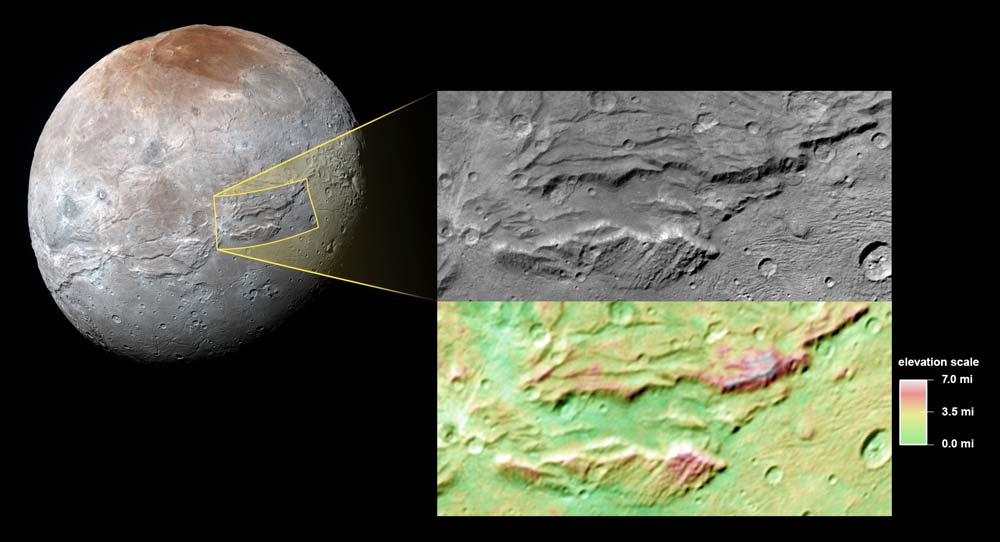Pluto's 'Hulk-Like' Moon Charon Is Bursting with a Frozen Ocean

A frozen subsurface ocean may have caused Pluto's largest moon, Charon, to begin bursting at the seams, much like Marvel's green superhero the Hulk.
A newly released image of Charon from NASA's New Horizons spacecraft suggests that some of the fractures on that moon's surface may be the result of a once-liquid ocean beneath the surface freezing over time. That may have resulted in the signs of expansion on Charon's surface that NASA scientists compared to "Bruce Banner tearing his shirt as he becomes the Incredible Hulk."
The largest of Pluto's five moons, Charon is about 750 miles (1,200 kilometers) in diameter, about half as wide as Pluto. Because the center of mass of the Pluto-Charon system lies beyond Pluto's surface, the two are frequently regarded as a twin planet system. [See more awesome Pluto and Charon photos by New Horizons]
When New Horizons passed by Charon in July 2015, the probe discovered a network of tectonic faults on the moon in the form of ridges, scarps and valleys. The extensive system of chasms is one of the longest in the solar system, stretching at least 1,100 miles (1,800 km) long and 4.5 miles (7.5 km) deep. By comparison, Arizona's Grand Canyon is only 277 miles (446 km) long and just over a mile (1.6 km) deep.
The new image shows a color-coded topography of Serenity Chasma captured by the Long-Range Reconnaissance Imager (LORRI) on New Horizons. Measurements of the feature's shapes reveals that Charon's water-ice layer was once at least partially liquid before freezing solid.
Scientists have said that Charon may have housed a layer of liquid water, the same material that makes up Charon's surface. The decay of radioactive elements, combined with the internal heat produced by Charon's formation, could have caused the deeper water-ice to melt. As the moon cooled over time, the ocean would have frozen and expanded. Like with an overly full plastic cup of water left in the freezer, the surface was pushed outward, with tearing resulting in the detailed system of chasms, scientists said.
It's also thought that Pluto once hosted a liquid ocean, though the younger surface of the dwarf planet suggests that this ocean took longer to freeze than Charon's.
Get the Space.com Newsletter
Breaking space news, the latest updates on rocket launches, skywatching events and more!
Editor's note: The headline of this story was corrected on Feb. 23 to reflect the findings on Pluto's largest moon Charon, not Pluto itself.
Follow Nola Taylor Redd on Twitter @NolaTRedd or Google+. Follow us at @Spacedotcom, Facebook or Google+. Originally published on Space.com.
Join our Space Forums to keep talking space on the latest missions, night sky and more! And if you have a news tip, correction or comment, let us know at: community@space.com.

Nola Taylor Tillman is a contributing writer for Space.com. She loves all things space and astronomy-related, and enjoys the opportunity to learn more. She has a Bachelor’s degree in English and Astrophysics from Agnes Scott college and served as an intern at Sky & Telescope magazine. In her free time, she homeschools her four children. Follow her on Twitter at @NolaTRedd









